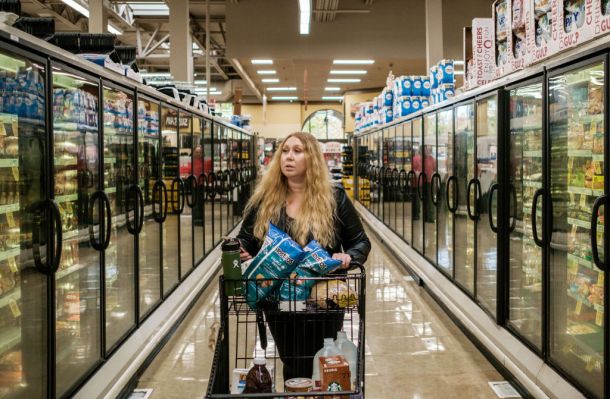Earlier today, Instacart more widely rolled out its Pickup product, which enables customers to retrieve groceries directly from stores. The announcement comes just a day after Instacart shoppers unveiled their latest action to #DeleteInstacart, another step in the ongoing series of protests against the grocery startup’s wage and tipping practices.
Next Monday, Instacart workers are asking customers and the general public to tweet at Instacart, telling the company they will delete Instacart until the company meets their demands. They wrote:
We have fought for fair pay, but Instacart continues to lower it. This current protest only has one small demand — to raise the app’s default tip amount back to 10%. This is the same default setting Instacart had originally, but the company has repeatedly lowered it (as well as resorted to outright theft) to take it away from us. Combined with their recent bonus-cutting act of retaliation, workers are now bleeding out of both sides — our pay is too low AND the default tip amount is too low.
In a statement, Instacart said it’s tested a number of default tip options over the years, including a 10% default, no default and a 5% default. That has been in place for the last two years.
“Ultimately, we believe customers should have the choice to determine the tip amount they choose to give a shopper based on the experience they have,” an Instacart spokesperson said. “The default amount serves as a baseline for a shopper’s potential tip, and can be increased to any amount by the customer.”
In light of a new California gig worker protections law, which Instacart opposes, the greater push into pickup services could be a way for the company to beef up its argument that gig workers are free from the control of Instacart, and that its part-time workers* do the bulk of what Instacart says is its fastest-growing business.
If so, Instacart’s efforts line up with Uber’s recent steps to ensure its drivers will be able to remain independent contractors. Uber earlier this month eliminated upfront pricing in favor of estimated prices, with the exception of Uber Pool rides. It also discontinued rewards benefits like price protection on a route and flexible cancellations for trips in California.
According to the new law, in order for a hiring entity to legally classify a worker as an independent contractor, it must prove that the worker is free from the control and direction of the hiring entity, performs work outside the scope of the entity’s business and is regularly engaged in an “independently established trade, occupation, or business of the same nature as the work performed.”
Meanwhile, Instacart has been at odds with its full-service shoppers, who also handle deliveries, for quite some time — at least since 2016. That year, Instacart removed the option to tip in favor of guaranteeing workers higher delivery commissions. About a month later, following pressure from workers, the company reintroduced tipping. Then, in April 2018, Instacart began suggesting a 5% default tip and reduced its service fee from a 10% waivable fee to a 5% fixed fee. Since then, Instacart shoppers have consistently demanded that the company reinstate the 10% default tip.
Instacart has previously said it’s committed to providing its shoppers with an earnings structure that offers upfront pay and guaranteed minimums. But given that a lot of these issues stem from the delivery portion of the service, instead of actually boosting their earnings, Instacart could come to rely less and less on deliveries, and therefore rely less on independent contractors.
To be clear, Instacart has two types of shoppers: the part-time employees who only shop in store and independent contractors, who work as full-service shoppers, handling shopping and deliveries. Instacart currently employs 12,000 part-time, in-store shoppers and has more than 130,000 independent contractors on board.
In a statement, Instacart President Nilam Ganenthiran said Pickup is the company’s fastest-growing product, with customers ordering more for pickup than for delivery.
“2020 is the year of pickup,” Ganenthiran said. “For our retail partners, we’ve seen Instacart Pickup become a gateway to growth in a margin-thin industry. Our pickup product is also becoming a significant revenue contributor for our retail partners, growing customer basket size by an average of 15% and accounting for an average of 20% of a retailer’s total Instacart store sales.
Meanwhile, Instacart has further invested in this service by creating a new general manager role for Pickup, led by Sarah Mastrorocco. By the end of the year, Instacart says it expects Pickup to become a multibillion-dollar business.
If that happens, and Instacart finds itself in court for classifying its workers as independent contractors, it may be able to argue that a nice chunk of its business does not rely on telling gig workers exactly when and where to go, but instead relies on part-time workers for shopping and its customers for picking up groceries.
*We’ve updated this story to clarify those shopping for Pickup are part-time employees and not independent contractors.
